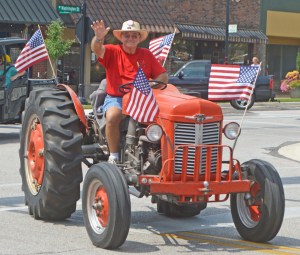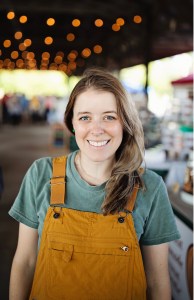Gardening terms — Tearing down the Tower of Babel
Published 6:45 am Monday, November 6, 2017

- Dictionary
When I first met my husband, he was in the military. I didn’t grow up around a lot of military people, so when we would get together with folks he worked with, it was like they were speaking another language made up largely by a bunch of acronyms.
They went TDY, had SOPs and PCS’d from time to time. It took me a little while, but I eventually was able to understand what they were talking about.
Trending
The same thing happened when I would be in a conversation with gardeners. I was pretty sure they were talking about plants, but they used a lot of terms that I wasn’t exactly familiar with, and some I was positive that they just made up.
In this two-part series, common gardening terms will be defined so we are all speaking the same language.
• Soil pH: The soil pH value is a measure of soil acidity or alkalinity. Soil pH directly affects nutrient availability. The pH scale ranges from 0 to 14, with 7 as neutral.
• NPK: These letters correspond to the three numbers that are listed on fertilizers. They stand for nitrogen (N), phosphorus (P) and potassium (K). So a 10-10-10 fertilizer has 10 percent of each nutrient. Nitrogen is responsible for the green, leafy growth; phosphorus, for the growth of flowers and fruits, and potassium is responsible for the roots and plant health.
• Soil amendment: Any material designed or used to increase the productivity of a soil. That may mean increasing drainage, soil organic matter, soil composition, tilth or nutrient/moisture holding capacity.
• Germinate: The process where the newly developed plant emerges from the seed coat and begins visible active growth.
Trending
• Asexual propagation: Process of creating new plants by using tissue from the original mother plant. Asexual propagation includes, cuttings, grafting, budding, layering, tissue culture, etc.
• Sexual propagation: Involves the transfer of pollen from the male flower or male flower parts to the female flower or female flower parts which results in the development of seeds.
• Leggy: When a plant’s stem grows long and thin, with sparse leaves. Plants that are leggy can become top-heavy. Pinching when the plant is young helps it grow bushier. Many times, this is a result of insufficient sunlight.
• Pinching: Cutting or pinching the top buds of a young plant to promote a thicker stem and bushier plant.
• Root bound: When a potted plant outgrows its container, the roots become entangled and matted. Trees can also become root bound when planted in severely compacted soils. The roots will grow around instead of spreading out.
• Wet feet: This is a very common term among gardeners. Rosemary does not like wet feet. It just means that their roots do not like to grow in constant wet soil but prefer the soil to dry out between watering. Occurs in poorly drained soils.
• Bolting: The premature production of seeds in an effort to reproduce. Bolting occurs as a response to the production of plant hormones for a number of reasons, such as stress, changes in day length, extreme heat. Often results in a reduced crop yield.
• Deadheading: The process of removing spent blooms. This will promote continued blooming.
• Soil: What the rest of us call dirt.
Life span and traits
• Angiosperms: Fancy name for flowering plants.
• Annual plants: Plants that complete their life cycle in a single year, e.g., peas and petunias.
• Hardy annuals: Plants that can tolerate considerable frost and are planted in early winter, e.g., pansies.
• Biennial plants: Plants that complete their life cycle in two years, e.g., parsley.
• Perennial plants: Plants that may exist for many years on the same root system, returning each year. Daylilies are perennial plants.
• Resistant varieties: Plants that have been developed with tolerance to a particular disease agent and/or growing condition.
• Deciduous plants: Plants that lose their leaves for part of the year. Hardwood trees are deciduous.
• Evergreen plants: Plants that do not lose all of their leaves all at once.
• Herbaceous plants: A plant that has nonwoody stems that die down to soil level at the end of the growing season; may be annual, biannual or perennial plants. Bulb plants such as tulips and daffodils are good examples.
Next week, we will define the lesser known parts of plants and some of the factors that affect them. Until then, happy gardening.
— Irland, a member of the Limestone County Master Gardeners, can be reached at kippirland@hotmail.com. For more information on the Limestone County Master Gardeners, visit http://mg.aces.edu/limestone.






